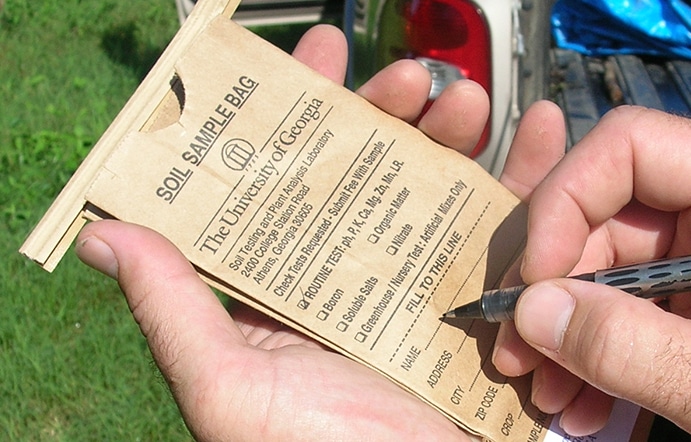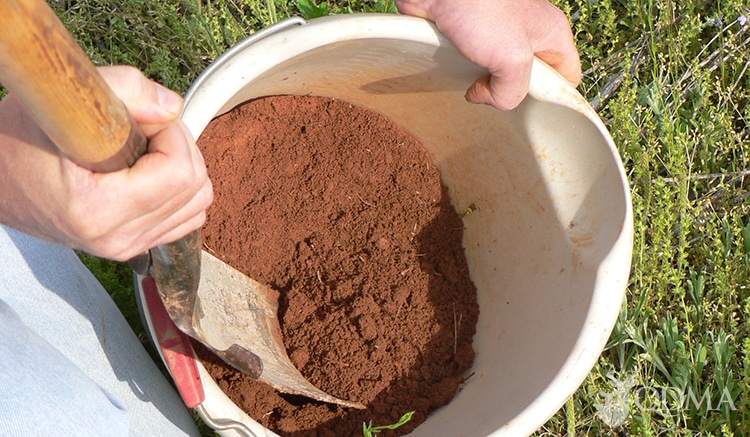Preparing a quality food plot takes time, labor and money. If I am investing all of that, I want to ensure my food plot has the greatest chance of maximum production. Achieving this is as simple as a soil test.
I have to admit that in the past I have been guilty of disking dirt, throwing some seed out, and doing my rain dance — all without conducting a soil test. I was sometimes fortunate to produce some high-quality food plots, but most of the time I was not. Looking back now, I could have saved myself a lot of time, labor and money on those unproductive plots by testing the soil to know exactly what soil amendments (fertilizer and lime) were required for optimal forage production. A soil test is easy, so why not do it?
The list of equipment needed to gather a soil sample is relatively short and inexpensive. All you need is a container like a clean plastic bucket (not metal) and a soil sample bag or plastic sandwich bag. As far as the collection tool, a stainless steel or chrome/nickel-plated soil probe or auger makes the process easy, but a shovel or spade can be used as well. There is potential for contaminating the sample, producing an inaccurate soil analysis, if your soil sampling tool or bucket is made of other materials.

A local farmer or your county extension office can loan you a soil-testing probe, but a standard spade or shovel will also work for collecting soil samples.
Whether you use a soil-sample probe or a standard shovel, each “core” you collect should be a sample or slice of soil 3 to 5 inches deep. This depth means the core begins below the layer of organic duff at the surface. It’s best to collect multiple samples from spots throughout each individual plot to provide a good representation of the soil at that site. Typically, five to 10 individual samples from each plot should be taken to achieve this. Put each sample from one plot in your clean plastic bucket, mix all the samples thoroughly, and take approximately 2 cups from the bucket to place in your sample bag. Label the sample bag with the information requested by the lab you are using. For most hunters, the most convenient service is provided by your county extension office. Most extension offices provide inexpensive soil analysis tests (For me in Missouri, it’s $15), and they usually provide sample collection bags. Be sure to fill out which desired species you intend on planting for accurate fertilizer recommendations, as certain plant species have different nutrient requirements.

Most soil-testing labs will provide you with sample bags that include a form for important information. Be sure to indicate the crop you want to plant.
Once you receive your test results, you are ready to interpret your analysis. This will tell you the current soil pH and nutrient levels and provide recommendations for fertilizer and lime applications to properly amend the soil. These applications will be recommended in tons per acre or pounds per square feet for the plant species you provided (see an actual soil-test report from a food plot below).
Soil pH influences a plant’s ability to use available soil nutrients. An inadequate soil pH value will limit the plant’s ability to uptake nutrients, therefore any fertilizer application has the potential to not be fully utilized by the plant. This results in wasted money on fertilizer. Soil pH is a measure of the soil’s acidity and alkalinity. The scale ranges from 0 to 14, with 7 being neutral, values below 7 being more acidic, and values greater than 7 being more alkaline. For most food plot species, the optimal pH range is 6 to 7. Agricultural lime or pelletized lime recommendations will help to reach the desired pH value. It can take three to six months for a lime application to take effect on soil pH, so test early and apply the lime soon after you receive your test results.

Actual soil-test results from a food plot in Georgia.
Fertilizer recommendations will be reported as nitrogen (N), phosphorus (P) and potassium (K). The recommendation will call for pounds per acre or pounds per square feet to be applied. When buying most fertilizer, the three numbers in the analysis are percentages of the total weight in N,P, and K. For example, a 50-lb. bag of 10-10-10 fertilizer contains 5 actual pounds each of N, P and K. The remaining weight of the bag is simply filler. So, with your test recommendations in hand, you will need to do a little math. If your results call for 100 lbs./acre of nitrogen, for example, determine how many bags of fertilizer you need to reach that amount per acre based on the weight of actual nitrogen in each bag. If there is a fertilizer supplier near your hunting area, you will not need to buy individual bags. The supplier can custom mix a blend of fertilizer and/or lime based on your test results and then deliver and spread it on your plots for you. This approach is often cheaper than buying lime or fertilizer by the individual bag, especially for larger plots.
Knowing the correct applications of lime and fertilizer from a soil sample gives you the ability to produce high-quality food plots. These are beneficial to wildlife and can create some great hunting opportunities. I hope that you have fun with your soil sampling efforts, especially since you know the benefits that lie ahead.
